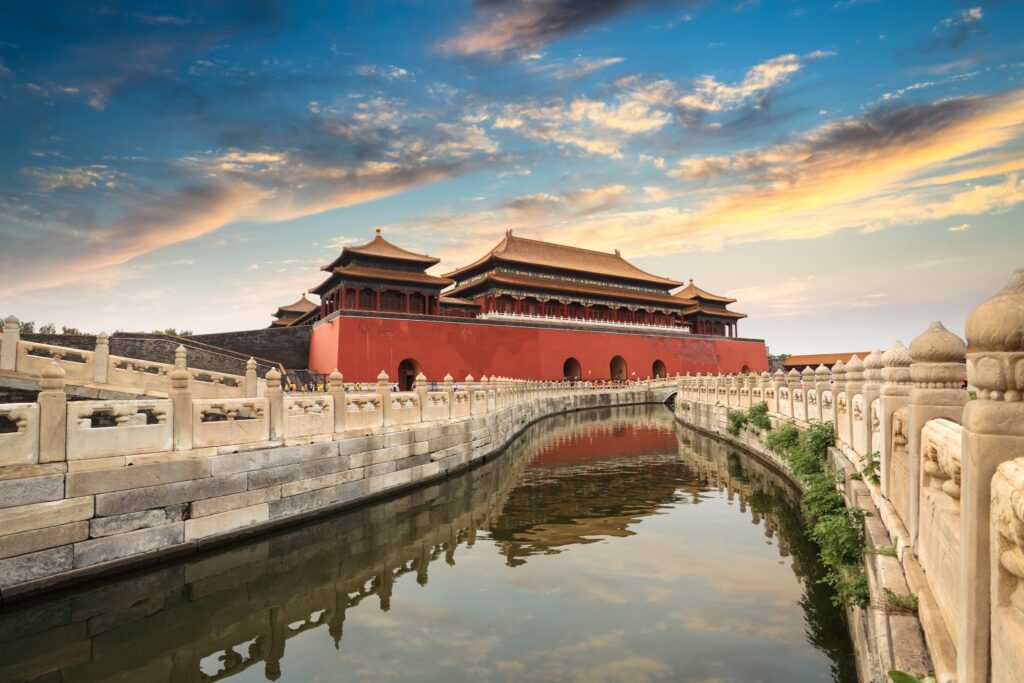At the center of Beijing lies the Forbidden City. Now known as the Palace Museum, it was the former Chinese imperial palace and state residence of the Emperor from the Ming dynasty to the end of the Qing dynasty (1420-1924). It served a great significance in Chinese history. As “the beating heart of Beijing” (Hernandez) and the palatial heart of China, it served as a political and ritual center. All activities, such as imperial court ceremonies or life-cycle rituals, would take place in different palaces. The court determined the occupants of the Forbidden City strictly according to their positions in the imperial family.

The construction of the Forbidden City was the result of a coup d’état plotted by Zhu Di, the fourth son of the Ming dynasty’s founder, Zhu Yuanzhang, that made him the Chengzu emperor in 1402. The architectural style reflects a sense of hierarchy. While the reception halls were located in the front, where entry into the Forbidden City was strictly restricted, the complexes were located in the back, where the imperial family was housed. The walled palace, which had a rectangular shape meant to represent law and order, “was encircled by two square ring roads which defined, and protected, the ancient city”. Public and domestic spheres were also divided in the Forbidden City. The southern half, or the outer court, belonged to the realm of state affairs, and only had men access its spaces. It included the emperor’s formal reception halls and was the place for religious rituals and state ceremonies. The inner court is the domestic space dedicated to the imperial family, where three palaces align with the city’s central axis: the emperor’s residence known as the Palace of Heavenly Purity, the empress’s residence known as the Palace of Earthly Tranquility, and the Hall of Celestial and Terrestrial Union where imperial weddings and familial ceremonies took place.
Once the imperial system collapsed at the beginning of the 20th century, the Forbidden City, “which had been home to emperors since 1420 and housed the world’s greatest collection of art treasures” (Arranz), was turned over to the public and changed into a national museum, now known as the Palace Museum.
Bibliography
Arranz, Adolfo. “How China’s Forbidden City Became the Palace Museum.” South China Morning Post. December 05, 2018
Hernandez, Marco. “The Origins of Beijing’s Forbidden City.” South China Morning Post. May 29, 2018. https://multimedia.scmp.com/culture/article/forbidden-city/architecture/chapter_01.html?src=follow-chapter


One Comment